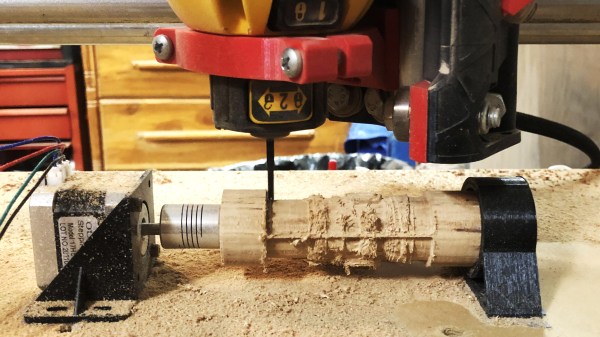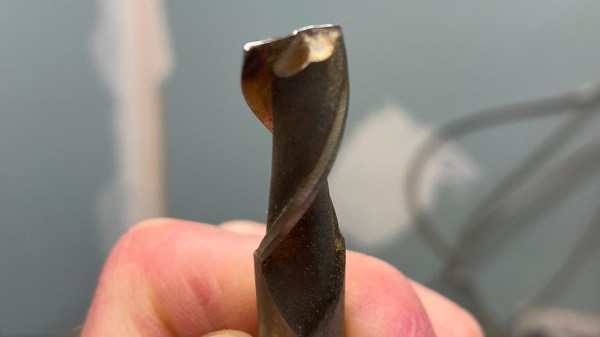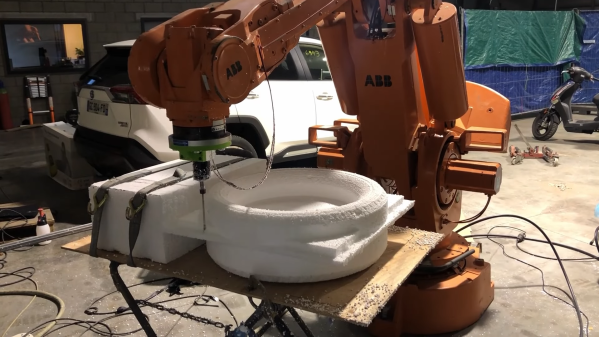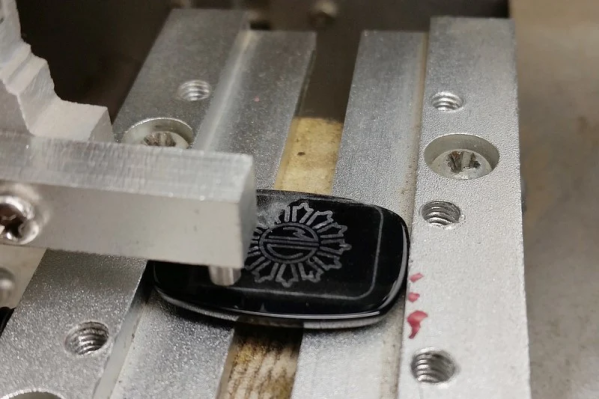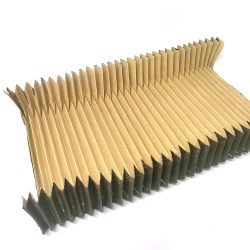Mats are flat pieces of paper-based material that fill the space between a frame and the art within. They perform a number of aesthetic and practical functions, and they can also be expensive to purchase. Making them by hand is an option, but it’s an exacting process. [wooddragon48] felt that a CNC solution would serve this need nicely, and began designing a DIY CNC tool to do exactly that.
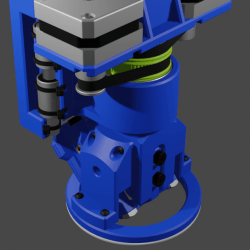 One of the tricky parts about cutting mat boards is that cuts are at an angle, and there is really no tolerance for overcuts or any kind of visual blemish. CNC control would seem to offer a great solution to both the need for precisely straight cuts, as well as fine control over where cuts begin and end in a way that opens the door to complex designs that would be impractical to do by hand.
One of the tricky parts about cutting mat boards is that cuts are at an angle, and there is really no tolerance for overcuts or any kind of visual blemish. CNC control would seem to offer a great solution to both the need for precisely straight cuts, as well as fine control over where cuts begin and end in a way that opens the door to complex designs that would be impractical to do by hand.
[wooddragon48]’s design has an angled cutter designed to plunge perfectly on demand, surrounded by a ring — similar to that on a router — which ensures the cutting tool is always consistently positioned with the material. It’s still in the design phase, but this is a type of tool that doesn’t yet exist so far as we can tell. The ability to CNC cut mat board, especially in complex designs, would be a huge timesaver.
Art and DIY CNC have a long history of happy intersection, as we have seen with a CNC router repurposed for string art, a CNC painting robot, and even an interactive abstract sculpture generator.


